Phew! Just got here in the nick of time and managed to moor on the last spot, before two hotel barges tied up behind us. Now, after three days in town, we are not astonished about the harbours popularity, because Delft is truely beautiful! 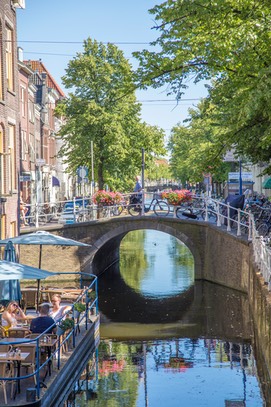
The inner town is striated with small canals. Quaint Venetian like arched stone bridges cross the canals in regular distances, leading to narrow, cobblestoned streets and laneways. Alongside the canals are cafés and restaurants and tall windowed, elegant villas where famous people once resided or spent their holidays. Even the current King Willem Alexander stayed in one of these grand houses as a student.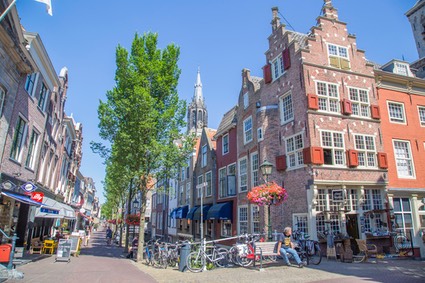
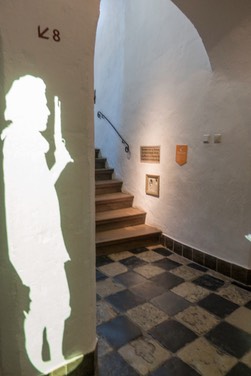
The Father of the Netherlands, William of Orange, led the revolt against the Spaniards from here. He stood for religious freedom and freedom of expression. Unfortunately he had enemies who, like Spain, wanted to enforce Catholicism. He survived one assassination attempt. But in 1584 a fanatical Roman-Catholic Frenchman, Balthazar Gerards, shot William dead on these stairs in Prinsenhof, Delft. Prinsenhof was a convent in those times which William had chosen as a refuge for him and his family. Framed on the bottom near the stairs you can even still see the bullet holes.
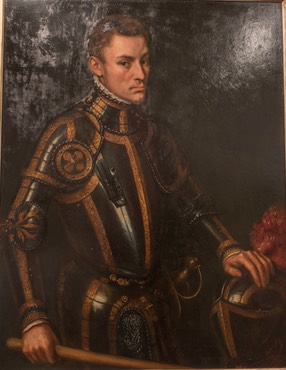
William was a good looking man. He married four times. Two of his wives died young and one, the marriage to Anna of Saxony, was unhappy and ended in separation. Though not before the “lady” in question had an affair. She even fell pregnant to her lover, a certain lawyer, Jan Rubens who later fathered the famous painter Peter Paul Rubens.
Not knowing much about art, I have new admiration for the Delft born and bred painter Johannes Vermeer. The Vermeer Haus is well worth a visit. It contains copies of all of Vermeer's wonderful paintings. One section demonstrates Vermeer’s amazing use of perspective and light. In another room his choice of colours and symbolisms are explained.
To see the actual locations here in Delft which appear in the paintings was an extra bonus!
One of them, “View of Delft” was painted from the town harbour, just about from where our boat was moored. 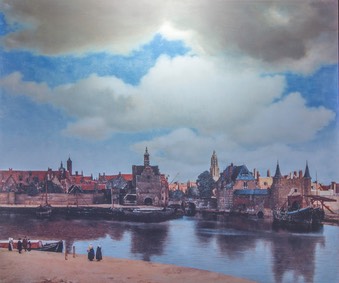
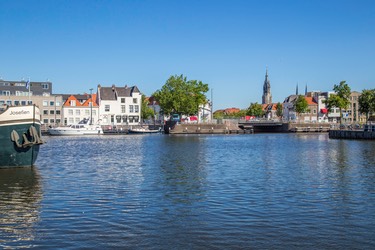
Left the wonderful painting, right the view across the harbour today. 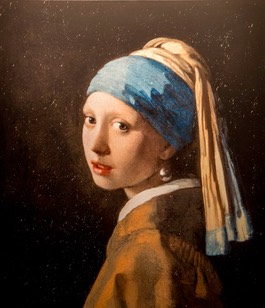
Of course “The Girl with the Pearl Earring” followed us around. See her eyes looking at you wherever you move!
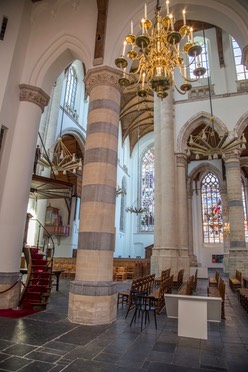
Johannes Vermeer didn’t have it easy in love either! For a long time he was forbidden to marry the love of his life, Catharina Bolnes, by her strictly roman-catholic mother, until he finally converted from protestant to catholicism himself. He fathered 15 children with Catharina, but not all of them survived. He died suddenly at the age of 43 and was buried in the "Old Church" where already two of his children were put to rest. His contrary mother-in-law was buried in the same family vault. The sad thing is that, when later his beloved wife died, there was no more room in the vault, so she had to be interred in the “New Church”.
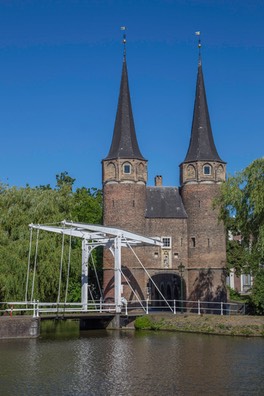
The New Church harbours also the prestigious mausoleum of William of Orange made from white, gold, bronze and black marble, as well as the Royal Family Crypt where most of the late Dutch Royal family have been interred.
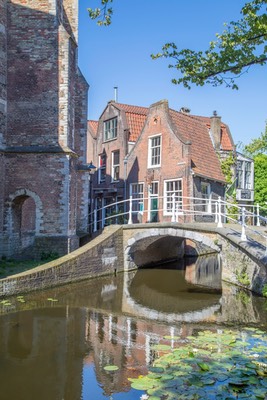
Stepping from the New Church onto the Market what should we bump into, but the statue of the same Hugo Grotius who escaped in a book box from Castle Loevestein! Hugo was born in Delft and was close to Prince Maurits, until the Prince disagreed with Hugos religious views and put him into imprisonment.
Enough of the name dropping!
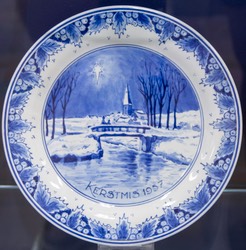
Except maybe of the name “Delft” itself, which is of world wide renown. When blue and white painted tableware was first imported by the Dutch East-India Company it was loved by the locals. Eventually Dutch potters and artists created their own blue and white porcelain. It grew into a prestigious industry, until the English created a finer type of porcelain, the Royal Doulton.
Today there is one of the original Royal Delft earthenware factory that still produces Delft Blue in the traditional way, yet with refined clay mixture after English example. 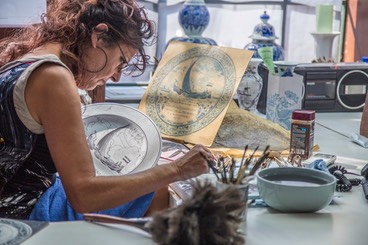
During the museum tour we watched potters and artists in action. Charcoal stencils are applied onto the raw earthenware and then the artist uses cobalt oxide to paint the fine designs. 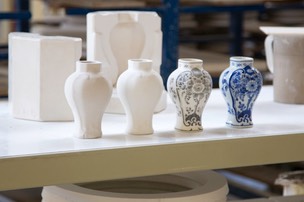 The initial colour when painted is black and turns only into the typical Delft blue after the items have been fired. Amazing to see are the steady hands and fine brush strokes of the artists.
The initial colour when painted is black and turns only into the typical Delft blue after the items have been fired. Amazing to see are the steady hands and fine brush strokes of the artists.
Vases, commemorative plates of Royal events and Christmas plates were among other items on display.
Sad to leave Delft, but the sun is still shining and the canal beckons us to move on.